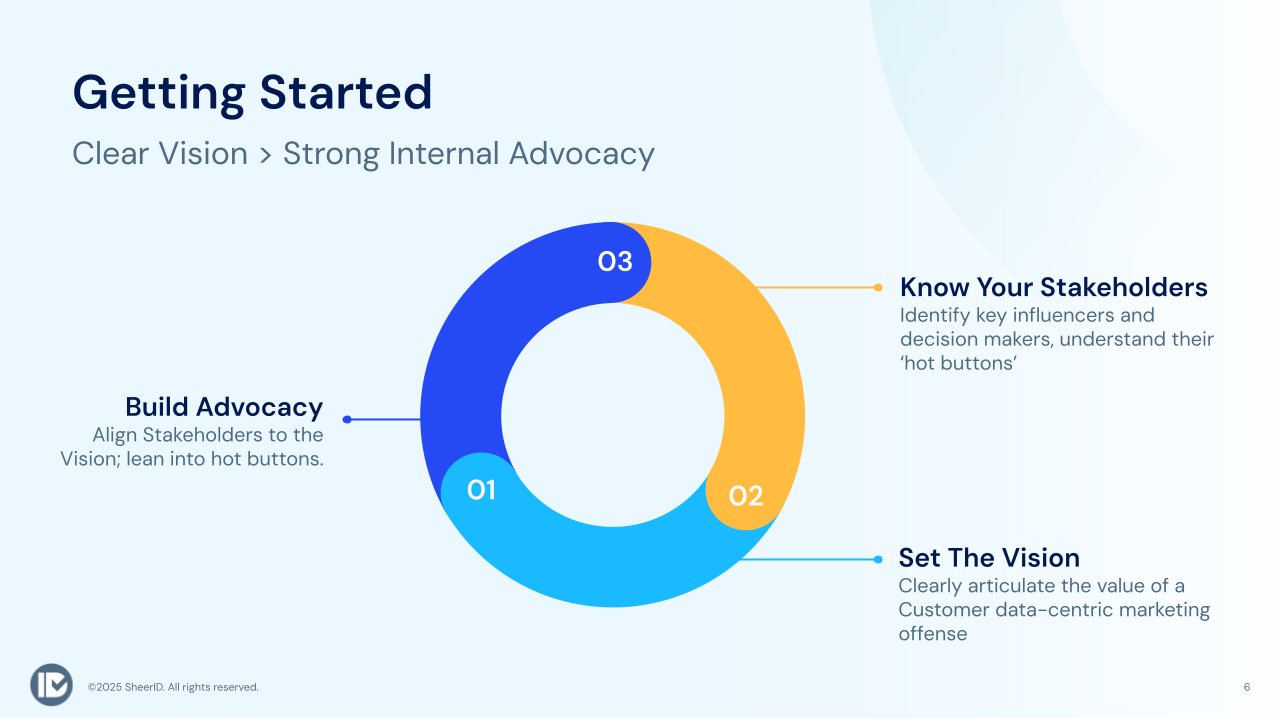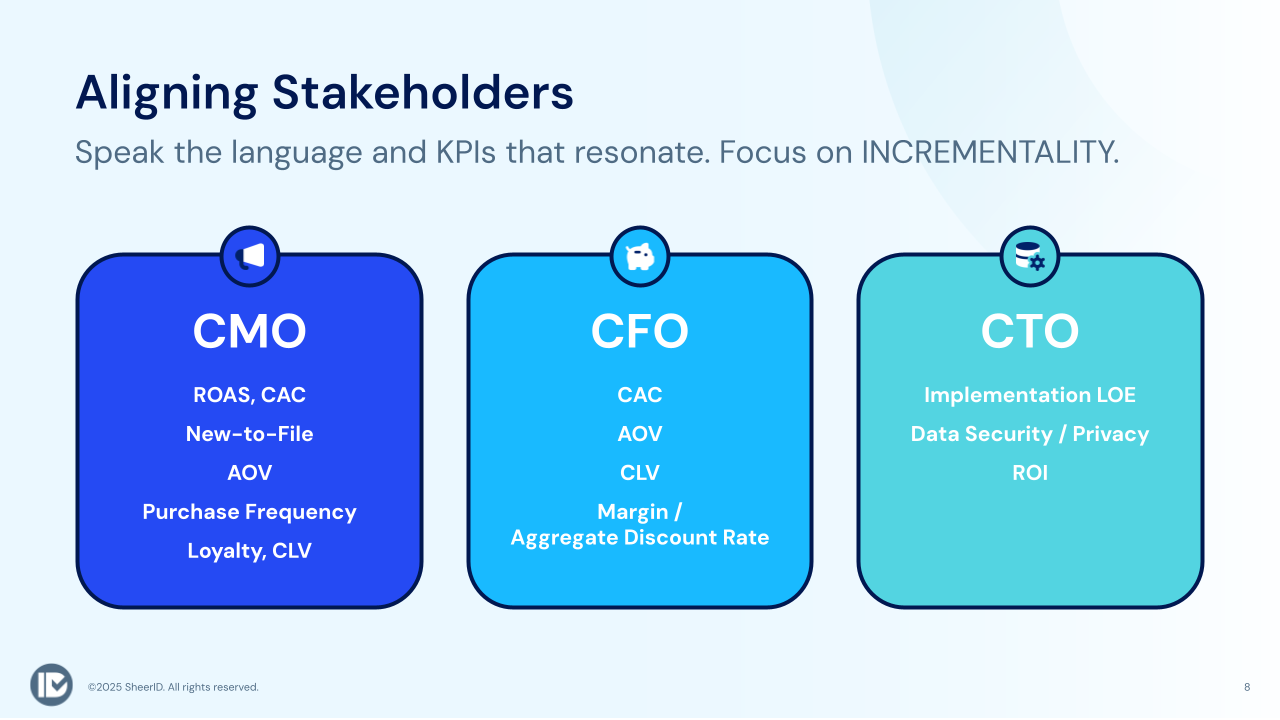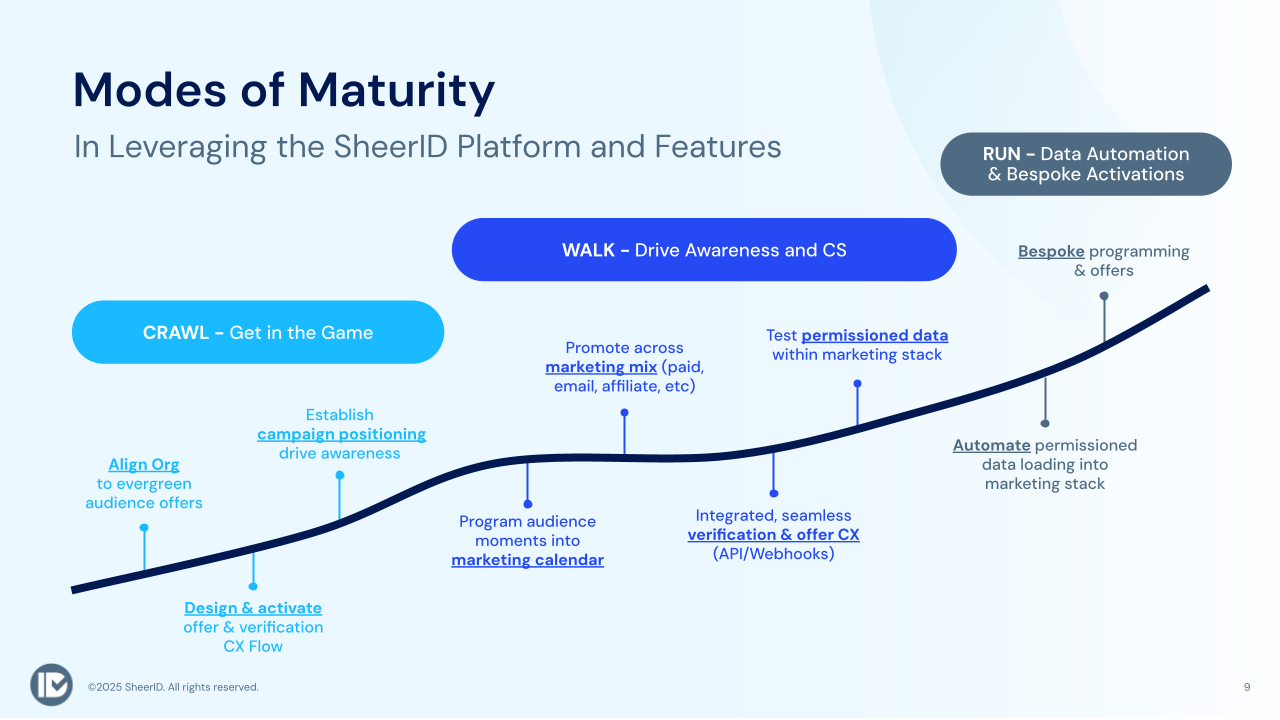For retail marketers, customer data presents a paradox.
On the one hand, it has tremendous power to enhance personalization, drive growth, and build loyalty. On the other hand, it’s often siloed, underutilized, and treated as a technical rather than a strategic asset.
Leveraging the full potential of your data requires embracing it as the single most important driver for strategic decision-making across the entire business. And that often requires a fundamental and pervasive mindshift.
It’s a tall order, but the payoff is great.
Here are some ways you can break down barriers to your data and empower every employee to leverage it for your company’s success.
Model Data Fluency
For too long, data insights have been trapped within departments. When you foster a data-driven culture across all departments, you can free those insights to serve all aspects of your business.

Encourage Curiosity
Anytime you review data, ask open questions that provoke thought and create a shared sense of purpose. Posing questions to your team like “What’s the story behind this metric?” and “How does it connect to the customer journey?” sets the norm that data isn’t dry and intimidating, but rather a rich lens for discovery.
Build Cross-Functional Bridges
Look for opportunities to translate data insights in ways that are relevant to each department. For example, reframe churn models as a springboard for building marketing campaign strategies, alongside the customer support team. Or consider how metrics like loyalty elasticity can help finance teams predict lifetime value.
Approaching data with this kind of cross-department empathy creates shared ownership of outcomes and success.
Connect Data to Purpose through Storytelling
Data comes to life when it’s tied to a narrative about people and business strategy. For example, instead of just reporting a drop in conversion, frame it as: “This metric tells us customers are struggling to check out—how do we fix that?”
Activate Data with AI
Most retailers have plenty of data. The challenge is to unlock its value. Embedding AI across workflows can help build a critical bridge between insight and action throughout your company.
For example, predictive modeling can anticipate demand, optimize pricing, personalize customer journeys, and reduce churn. The fact that this can happen in real-time while customers are interacting with you makes it even more powerful.
You can also leverage AI to deliver data-driven, hyper-personalized experiences that are deeply engaging. For example, you can use it to give customers highly tailored product recommendations, or apply cross-functional analytics to surface customer buying patterns and create campaigns that meet them where they are.
Measure Beyond Transactions
Traditional KPIs like conversion rate and NPS tell only part of the story. To measure the full impact of personalization, look beyond transactions to discover how customer relationships evolve. Here are some metrics that can help.
Engagement Quality Score
Go beyond clicks and opens. Measure the quality of engagement, such as time spent with personalized content, use of on-site search, and interactions with product comparison charts or “size finder” tools.
Loyalty Elasticity
Track how personalization extends the customer relationship by looking at data like the time between purchases, reduced churn rates after personalized interactions, and the impact of achieving a higher loyalty tier on purchase frequency and average order value. This can help you optimize marketing spend and prove that your loyalty efforts are building genuine commitment, not just rewarding transactional behavior.
Personalization ROI by Customer Group
Don’t just measure total lift—look at ROI by segment. Are your high-value customers receiving the most relevant recommendations to increase their basket size, and are your low-frequency shoppers converting more often with targeted offers? This links personalization directly to both revenue growth and cost efficiency.
And remember, not all customers may be worth the effort. Understanding what customers aren’t profitable for your business to acquire and retain is just as important (if not more important) as understanding what customers truly deliver growth for your brand. Attracting and retaining the wrong customers can cause a ripple effect across the organization, as you relentlessly try to shift messaging, product, and service strategies to appease these buyers that have limited product-market fit from the start.
Emotional Loyalty Signals
True loyalty is emotional. Measure indicators like engagement with user-generated content, social sharing of experiences, and opt-ins for features that offer customers more detailed personalization. For example, Unity Technology tracks how educators engage with their Unity Teach Community on Facebook to understand what makes them champions of its products.
Improvement in these metrics indicate when customers have the kind of genuine affinity for your brand that makes them resilient to competitor offers–and potentially sets your brand up for generational loyalty.
And don’t overlook signals from prospects who haven’t yet converted. Princess Cruises uses SheerID’s Audience Network to verify educators, first responders, healthcare workers and the military for its exclusive offers. But it also uses the data it collects from consumers who aren’t eligible to nurture their clear interest in the brand until the time is right for them to buy.

Cultivate Data-Driven Leadership Skills
Developing a strategic mindset is just as critical as mastering any new technology. This is especially true as you navigate the intersection of business success and personal growth.
Embrace Ambiguity
With the rise of AI, the best practices you discover today can become obsolete tomorrow. Be willing to openly share with your team how you’re experimenting, failing fast, and continuously learning new skills. Data-driven leaders understand that all you can do is make the best decision with the information you have at hand. And that you have to marshall the courage to pivot when new data calls you to.
Translate Data into Human Strategy
Technical skills are important, but even more essential is the ability to understand what AI can do, what it needs (clean, permissioned data), and how to translate its outputs into human-centric business strategies. Lean into becoming the interpreter who connects things like predictive models to product merchandising decisions, and personalization strategies to CX goals.
Influence Teams with Intention and Empathy
Break down silos by using data storytelling to create a shared understanding and inspire unified action. In cross-functional collaborations, empathy is the secret sauce. When you embrace another team’s goals as your own, you can frame data insights in a way that supports their mission. This turns your vision for change into a win-win that drives everyone’s success.

Proof of Concept
As SheerID’s SVP of Marketing, I’ve had the privilege of seeing firsthand how brands can harness data to drive their success.
Codecademy uses our Audience Network to verify students for an exclusive discount, then streams their permissioned data into its CRM. Having that data available enabled the company to improve user engagement throughout the customer journey, including email open rates exceeding 55%.
When data proved the success of ASICS online exclusive offer to educators, first responders, healthcare workers and the military, the company quickly made it available at its brick-and-mortar locations. And the data it collects from in-store verifications enables it to track and optimize the omnichannel experiences that their customers want—and that drive loyalty.
And by integrating SheerID’s Audience Data Platform (ADP) with its loyalty program, Michaels is able to use its exclusive offers for educators, seniors, and the military to drive engagement with Michaels Rewards.
Final Takeaways: Invest in Data Culture
In a world where AI is rapidly reshaping how we do business, effective leaders combine technical confidence with human connection and influence. You can do this by:
- Treating data as a shared, strategic asset.
- Embedding AI across workflows.
- Replacing internal silos with conscious collaboration.
- Translating data into decisions that truly matter.
When you invest in data culture, not just data infrastructure, you enable your entire company to reap the benefits of customer data.
Learn how SheerID’s Audience Data Platform (ADP) can help you drive growth through highly-personalized campaigns.


